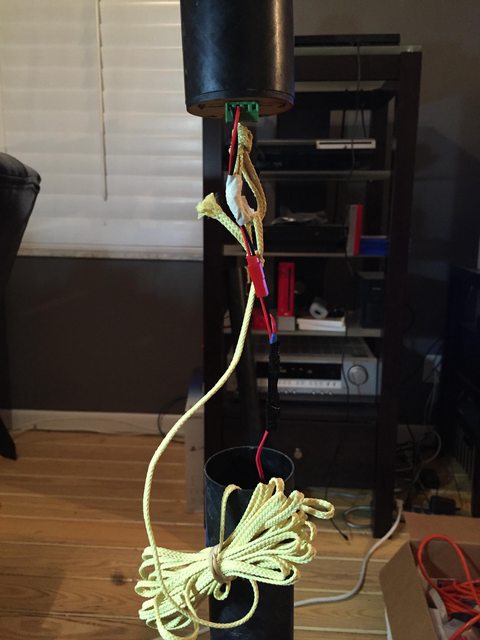This may help a bit, build thread on 2-stage Wildman Vindicator Jr. Basically same as yours just split-fin.
https://www.rocketryforum.com/showt...ldman-Jr-kit-to-a-2-stage-build-Vindicator-JR
Some highlights.
Conduit for staging wire only needs be long enough to pass through CR's + a bit.
My first couple of 2-stages, I ran long conduit all way up fin can to just below coupler. This ended up biting me later. Recovery cord pulled it away from wall and I could never get inside the bend back flush.
Now I run conduit just far enough that won't happen. Conduit is 3/16's "Foreign" brake line, available at any car parts store. 4-6 bucks for 2-4ft.
Bottom of conduit run to edge of retainer to aid in fishing wire.



Terminal block on av-bay .

Av-bay utilizes 2 tie rods with sled free floating [no tubes glued on] sled is cut so it fits tight front to back & side to side, so it cannot move when BP's installed. Sled is also cut so it sit's low in bay, allowing for more room on top of sled to install gear. If it was centered then no room for 9v to clear. # 8 threaded rod for tie rods.

Finally I now use female JST connector to slide match wire into. Wires are pulled through, small tabs bent to increase "pull" friction a bit, then trimmed close. [ tabs are exaggerated for pics, in reality cut close , so they cannot short by touching each other.]
There is some debris on table under pic on right of connector, looking like wire, ignore.
This technique works great. If you tape match wire to nozzle cap on motor, [needed if using separation charge] when motor starts, it will pull match wire free, completely ejecting it from airframe with cap. This leaves nothing to interfere with apogee deploy or tangle.
These pics NOT in build thread, this is something I just recently came up with & use. Quite successfully, I might add.


I use motor eject for simplicity in this size booster, with a timer in interstage coupler for separation charge, at motor burnout.
Sustainer motor ignition handled from Sustainer av-bay. I stage based on reaching altitude X and coast time or NO fire.










